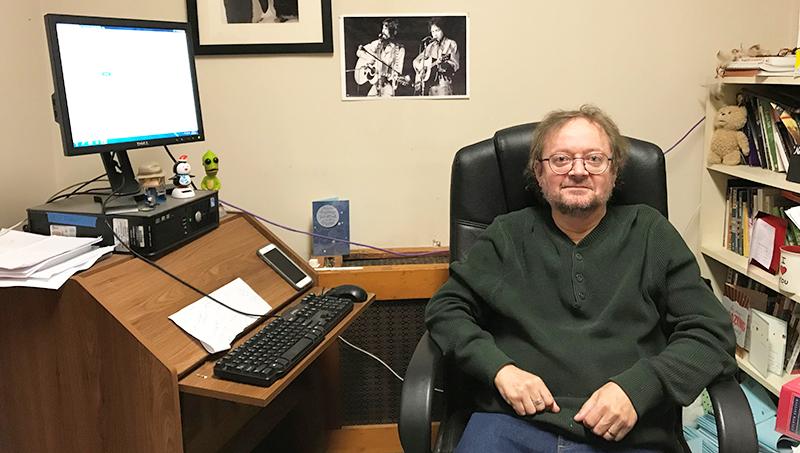Sex, penis, vagina, masturbation, orgasm. Somehow, throughout history, sex has become one of the most popular subjects of conversation, while simultaneously being the most taboo. Sex is a topical paradox in it’s enticingly high comodification and concurrent social reservations; that paradox is the root for much of the social-sexual blights that affect people.
One of those blights is the female-male orgasm gap. This gap refers to the disparity in lifetime orgasms between males and females, where men orgasm significantly more than women in their lifetime–through both during partner sexual acts and self-stimulation.
The cause of this gap is sociological in nature, beginning with the way that people are socialized to think and behave sexually,which in Western culture, is with a lens of shame.
This socialization begins in childhood, as children begin to discover the differences in genitalia and model caregivers’ actions. Their modeled behavior is then either reinforced or punished by said caregivers. Where a male child might be called a “ladies man” the female child would more likely be lectured on chastity–or at least modesty.
This continues into adolescence when female and male children are split up during health class for their sex education class. The curriculum for the boys might include safe sex practices, depending on region, and personal hygiene, while the female children are more likely to receive a more abstinence leaning curriculum surrounding sex. Many times, their virginity is likened to a piece of gum, a roll of tape, or a lock. Chewed gum, used tape and a multi-key lock are all valued less, perhaps even in disgust, when compared to one used less.
Such teachings occur both explicitly and implicitly throughout a person’s lifetime resulting in an understanding that sex is shameful–moreso for women–and people’s behaviors mimic this value.
Let’s talk about masturbation: Self-pleasure is an innately human behavior linked to various improved mental and physical health outcomes; however, that is not the message taught in society. Instead, many messages around masturbation show it as a shameful action, which is particularly true in messaging to women.
When men, regardless of age, express this behavior, society recognizes it as taboo, but also excuses it due to a collective mentality that “boys will be boys.” Conversely, women are historically taught that self-pleasure is a sin or disgusting and makes them less desirable to men.
The result of this messaging is a significant gender disparity in masturbation where in the U.S., 91% of men engage in such behavior while only 72% of women do so. Additionally, women engage in increased masturbatory behavior as they age; whereas men maintain a high level of activity throughout their lifetime. Essentially, women have to learn that it is okay to touch themselves while men have always known this to be fact.
Women are less likely to masturbate so they are already set behind when it comes to a lifetime orgasm count, even though this would be the most accessible manner to reach an orgasm. The gap is compounded further by barriers in partner sexual activities that reduce female orgasms.
The biological definition of an orgasm is “the rapid pleasurable release of neuromuscular tensions at the height of sexual arousal that is usually accompanied by the ejaculation of semen in the male and by vaginal contractions in the female.”
In short, the orgasm is the peak and release of sexual pleasure felt by an individual.
Unlike men, women are more capable of experiencing multiple orgasms in approximately 11 different ways,whether it be vaginally, clitorally, anally, cervically, etc, women have more opportunities to orgasm than men do. Despite this, one study found that only 39% of women reach orgasm during heterosexual intercourse as opposed to 91% of men. That is a 52% gap, and while the gap varies depending on the study, there is an indisputable disparity.
When broken down by the type of stimulation, the data is more staggering. The largest gap exists during penile-vaginal intercourse, followed by partner masturbation, then giving oral, and finally the lowest gap occurs when receiving oral. Of course, vaginal penetration is the most conventional and popular form of straight sex and also one of the least likely ways for a woman to orgasm.
This trend heralds from the social teaching that all sex should be focused on reproduction and not female pleasure – a woman does not have to orgasm for a pregnancy to occur, whereas a man does. Inherently, cultural emphasis is placed on male pleasure. Other acts aside from vaginal intercourse, such as oral sex, that are more likely to give a woman an orgasm have been legislated against throughout history, to modernity, via sodomy laws.
While such legislation no longer exists in the U.S., the tone and expectation such institutional structures have established still impact relationships and sex. Because women have been societally shamed for sexual acts, they also tend to be less likely to communicate what brings them pleasure with their partners.
Instead, they remain focused on male pleasure and acceptance. One study showed that 67% of women fake their orgasm; 25% use vocalization to do so. In addition to women not reaching orgasm, they also overcompensate to maintain the male ego surrounding sexual prowess.
Research has shown that when women are able to communicate with their partner, and their partner is receptive to the feedback, they are more likely to orgasm. In fact, 85% of women will orgasm in their sleep via dreams – thats 46% more than the 39% that reported orgasming during heterosexual intercourse.
Now why is it worth discussing the orgasm gap? Because female sexuality has been a consistent point of oppression used against women throughout U.S. history in particular.
Women were viewed as a man’s property; they belonged to their father until they were given to their husband. Once given to their husbands, it was expected they consummate the marriage, otherwise it could be legally annulled – there was not a choice. Because they were viewed as property, if a woman cheated on their husband, and their husband killed them, the husband would not be charged as it was his property to destroy or protect. This lasted through to the 20th century in some areas. And eventually, even thought it was illegal to kill one’s own wife, to rape a woman was still considered a property crime. As you were stealing from either the father or husband. Of course a husband could not be charged with rape because that was his property. Large scale legal reform to allow women to report and seek adjudication for their own rape, even against their husbands, did not start until the 1970s.
In essence, women did not own their sexuality until the 1970s at the earliest, they were objectified for male pleasure and reproduction without any legal consideration for consent. Rape was legal.
Female sexuality is still oppressed today as more and more laws are passed threatening female access to reproductive healthcare and contraceptives, further emphasizing that women should be reduced down to their parts as “babymakers” and that the only time they should engage in sex is to reproduce.
Female sexuality has always been suppressed and owned in the U.S. while female pleasure has been deemphasized or forgotten completely. The orgasm gap is a symptom of the disease that is patriarchal control and systemic sexism.
So say the word; talk about orgasms. Talk about how you achieve orgasms with your partner. Talk about why women are not climaxing enough. Destigmatize the subject and scream it, moan it – or maybe you’re just a sheet grasper–but say it.































